Modern Research Buildings
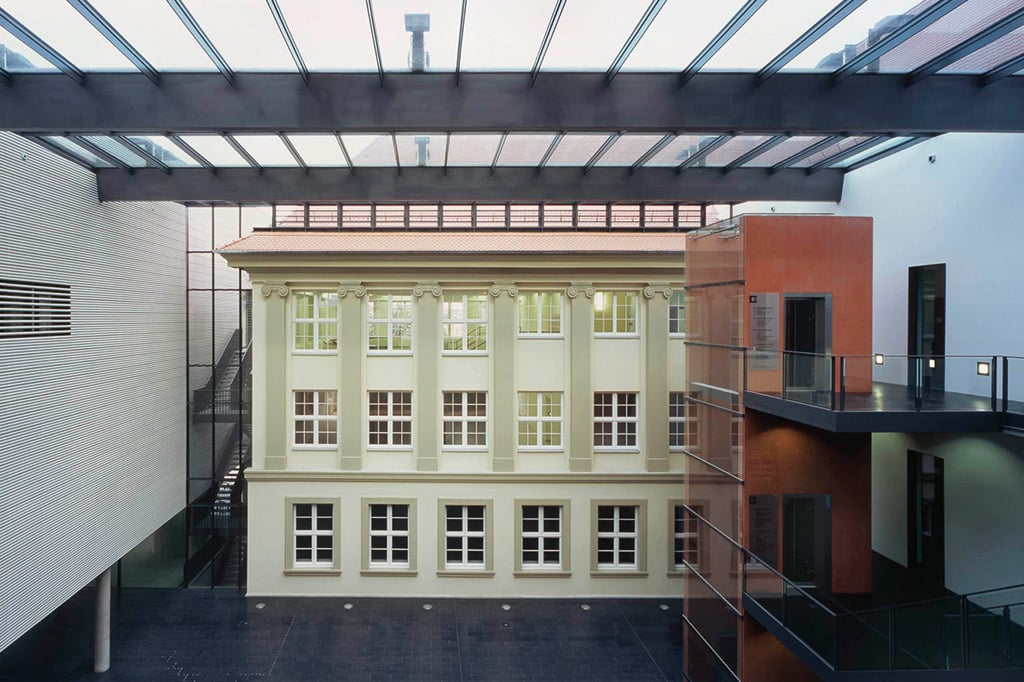

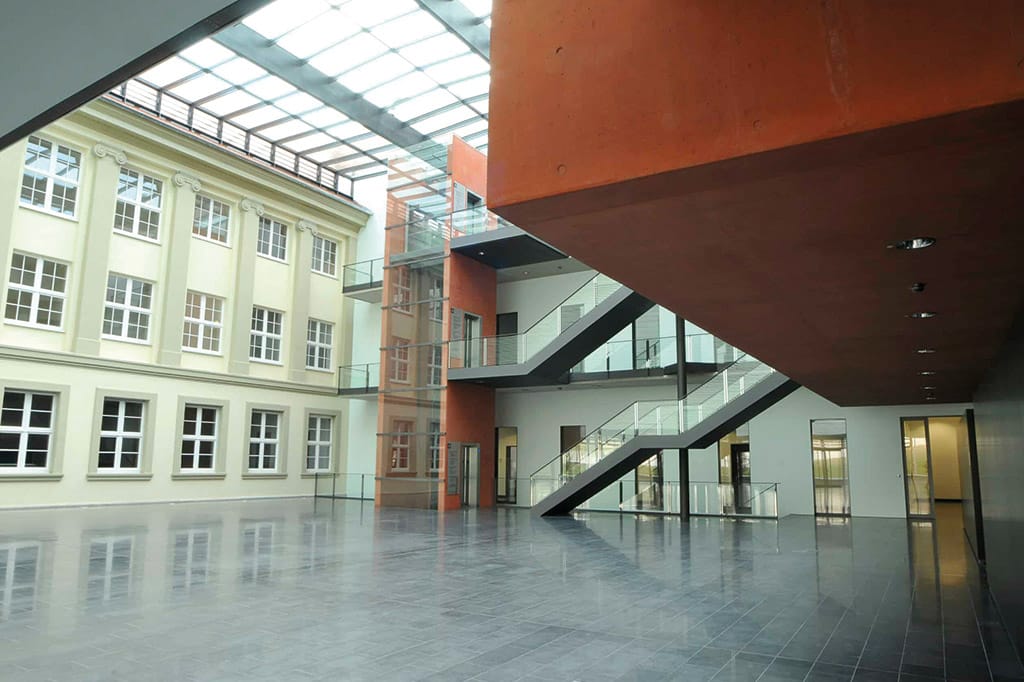

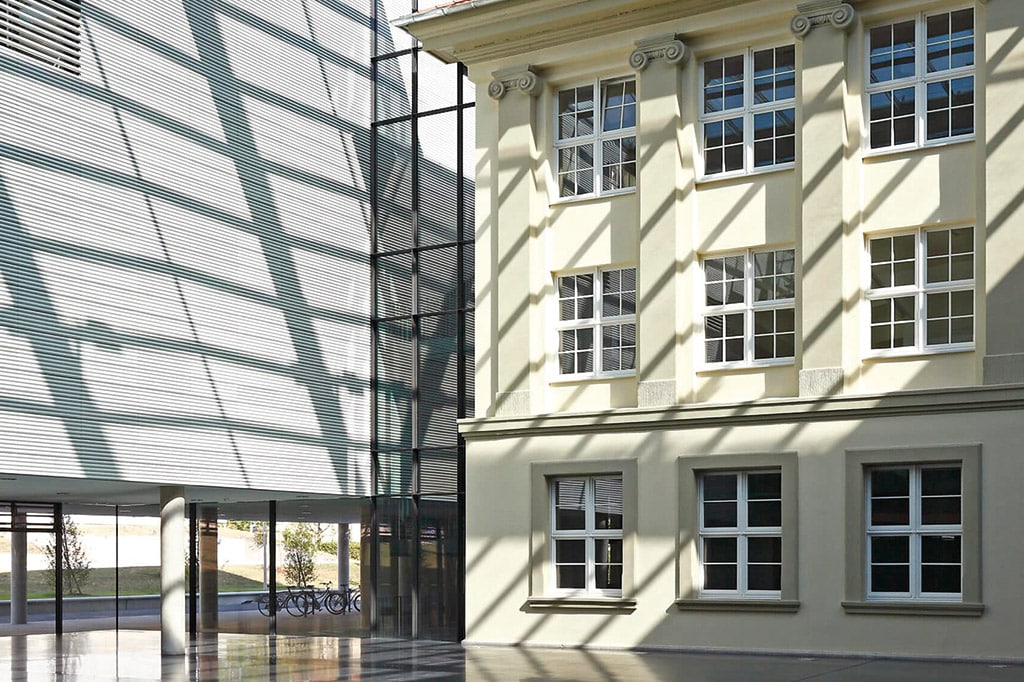
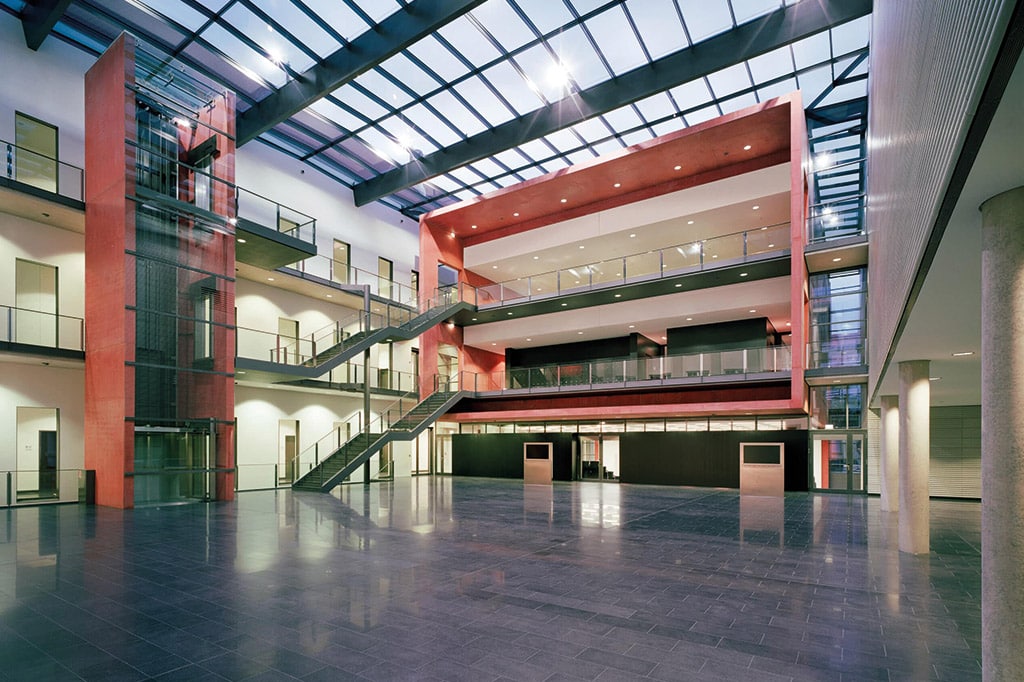
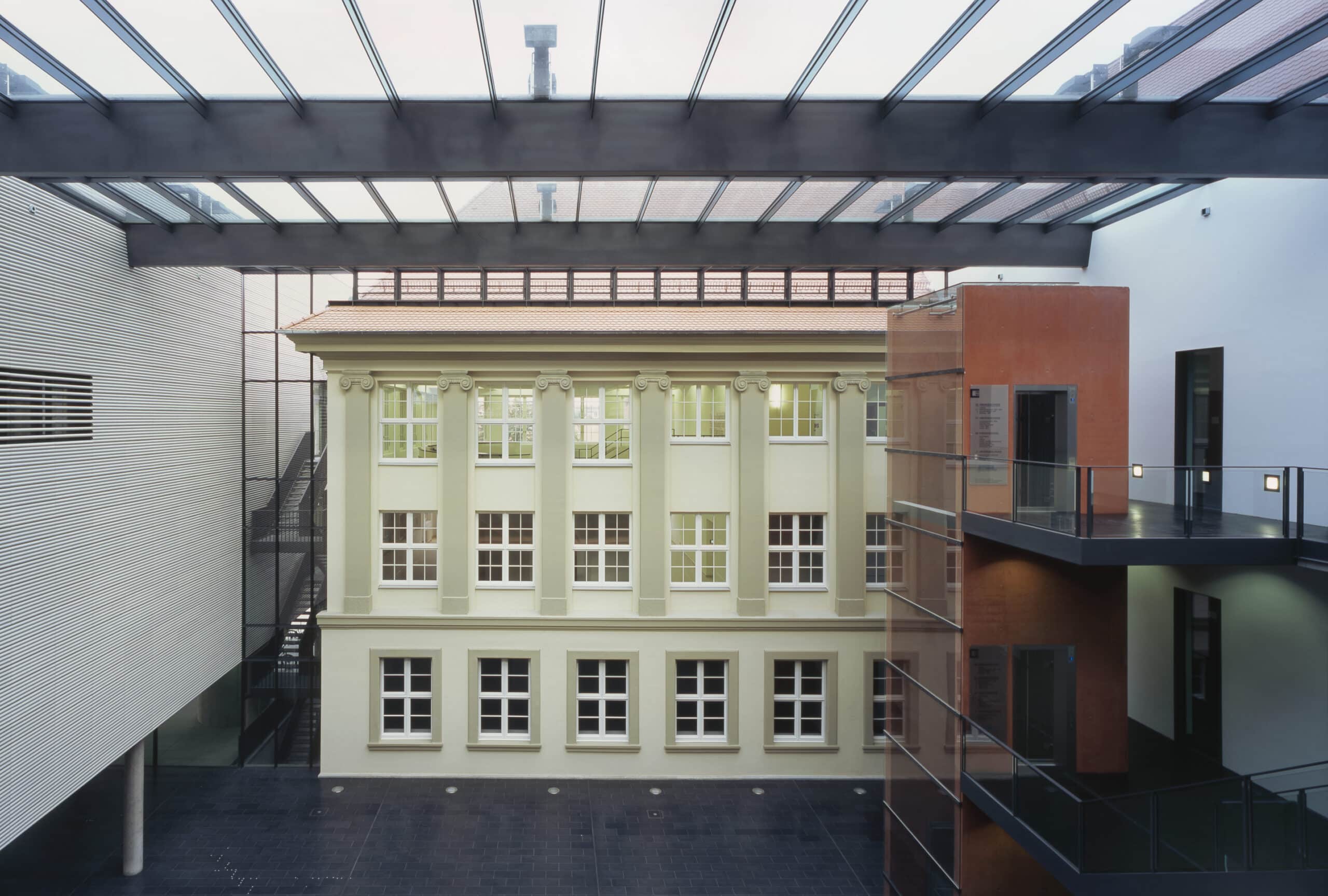
Rudolf Virchow Center for Integrative and Translational Bioimaging
The Rudolf Virchow Center for Integrative and Translational Imaging (RVZ), located at the University of Würzburg, is a pivotal interdisciplinary research centre dedicated to visualizing fundamental life processes across scales, from sub-nano to macro. Established in 2001 with the support of the German Research Foundation (DFG), the RVZ has evolved into a central institution of the university, particularly known for its focus on translational research.
The Center, named after the renowned 19th-century pathologist Rudolf Virchow, continues to honour his legacy by advancing our understanding of diseases at the molecular and cellular levels. Its location on the medical campus enhances its collaborative ties with medical research partners, fostering a vibrant environment for interdisciplinary research. The RVZ houses twelve research groups and approximately 100 scientists who investigate the molecular underpinnings of health and disease.
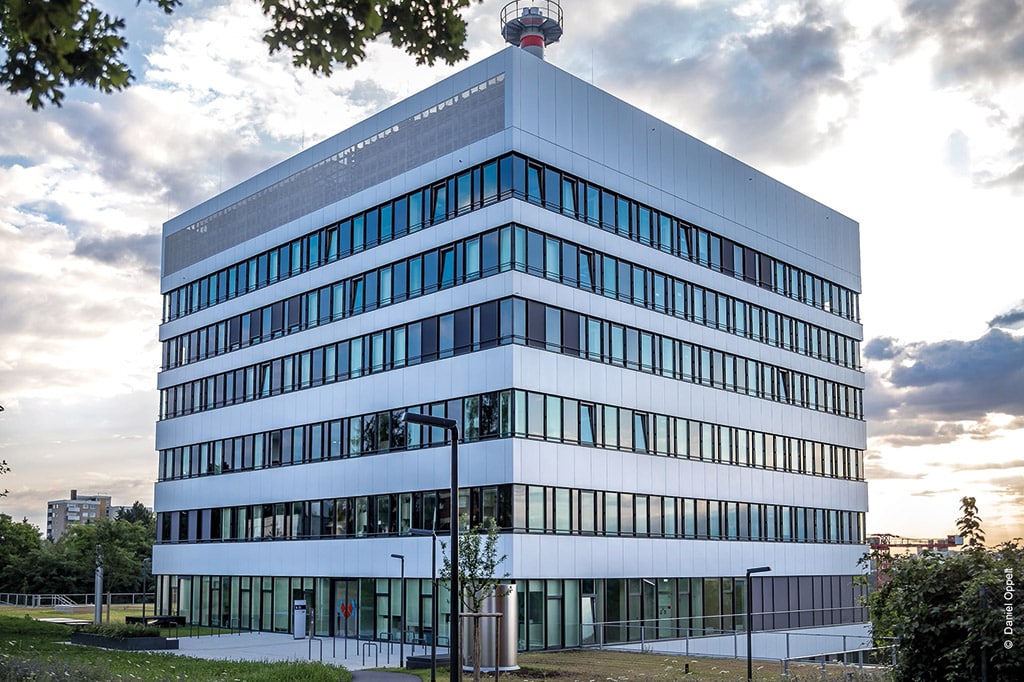
Comprehensive Heart Failure Center
The Comprehensive Heart Failure Center Würzburg (CHFC) is a leading interdisciplinary research and treatment facility dedicated to addressing the complexities of heart failure and its comorbidities. Positioned uniquely nationwide, the CHFC integrates basic science, clinical research, and patient care all under one roof at the University Clinic Wuerzburg.
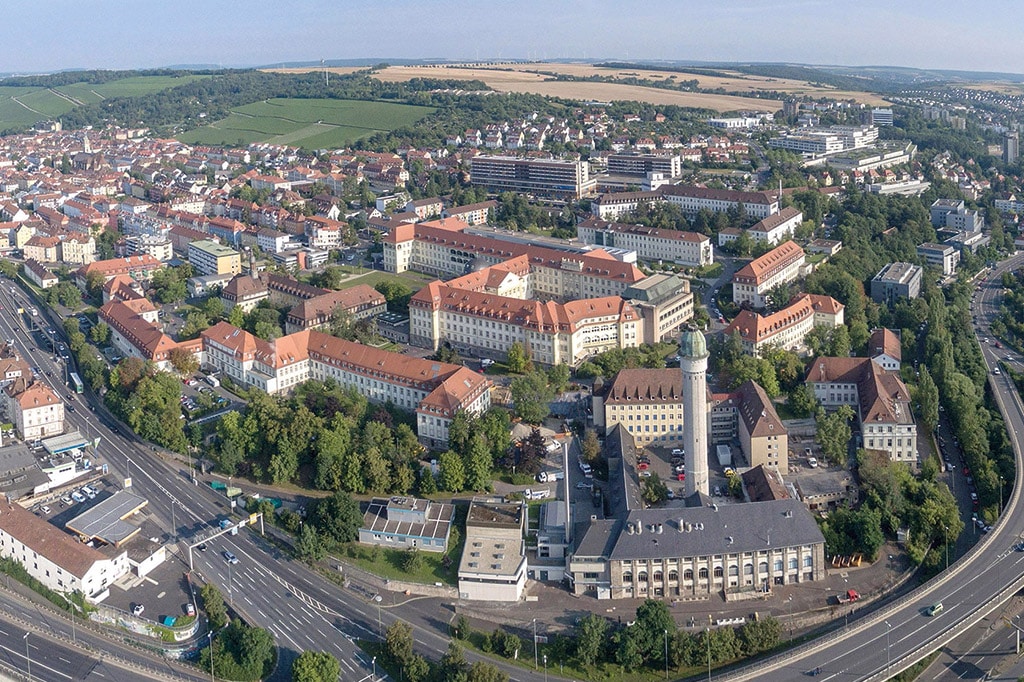
Institute of Experimental Biomedicine
Biomedicine, a sub-discipline of human biology, bridges the gap between human medicine and biology, focusing on understanding the causes of diseases, their prevention, and pre-emptive treatment strategies. The Institute of Experimental Biomedicine, affiliated with the University Hospital Würzburg (UKW), is structured around two main chairs, each dedicated to distinct but complementary research directives.
Chair of Experimental Biomedicine I focuses on vascular medicine, especially the role of platelets in various physiological and pathophysiological processes, including thrombopoiesis — the production of thrombocytes.
Research at Chair II centres on atherosclerosis and cardiovascular diseases. Atherosclerosis, a leading cause of death in the Western world, involves chronic inflammation of the vessel walls leading to the formation of plaques, ultimately causing vessel occlusion, heart attacks, and strokes.
This structure enables the Institute of Experimental Biomedicine to underpin the development of therapies aimed at preventing arterial thromboses and systemic inflammations, reflecting its commitment to translating scientific discoveries into clinical applications.
State-of-the-Art Research Infrastructure
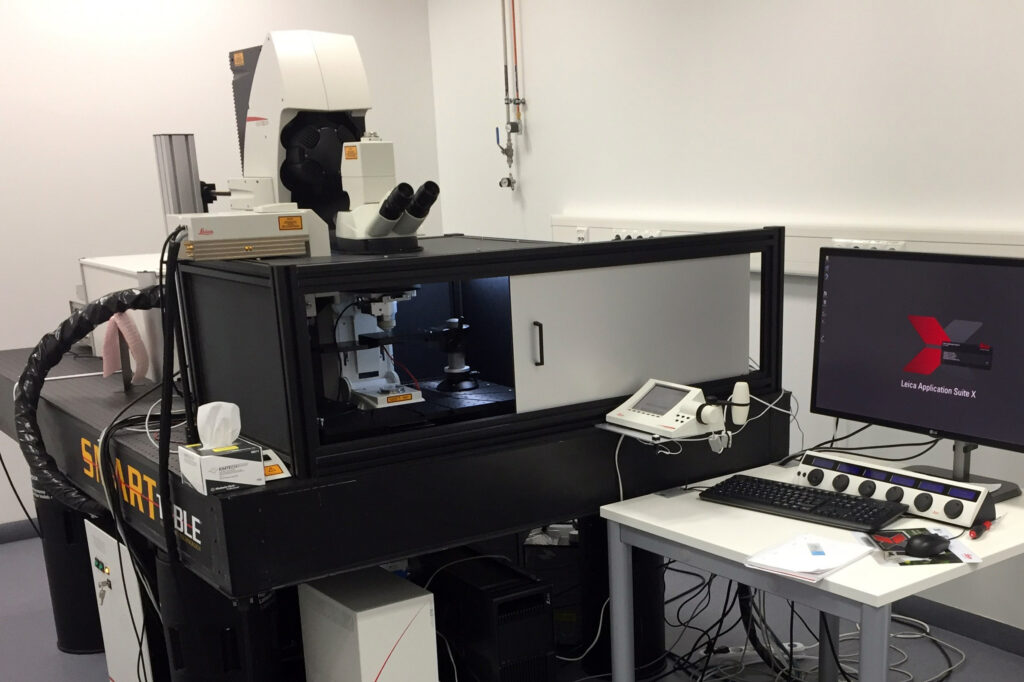
High-end Imaging
High-end fluorescence imaging is pivotal in contemporary life science research, enabling detailed visualization of cellular processes with exceptional clarity and precision. Our institutes are equipped with a comprehensive suite of advanced imaging technologies. We house four confocal microscopes, including Zeiss LSM 980 Airyscan 2 and upright and inverted laser-scanning models such as the Leica SP8, which provide high-resolution imaging crucial for detailed cellular analysis. Additionally, our facility boasts two multi-photon microscopes and two custom-built light-sheet fluorescence microscopes, designed for rapid imaging of biological specimens with minimal photodamage. For high-precision localization microscopy, we utilize a dSTORM microscope, ideal for super-resolution imaging that allows researchers to visualize cellular structures at the nanoscale. For specialized applications, we offer a PRIMO system, which integrates micropatterning, hydrogel polymerization, and microfabrication in one device, allowing researchers to create tailored in vitro cellular microenvironments for enhanced cell biology experiments and cryo-electron tomography studies. Our array of several wide-field fluorescence microscopes, including two Leica Thunder imaging systems, complements these capabilities, alongside a sophisticated fluorescence spectrometer FT300 for precise spectral measurements. This ensemble of high-tech instruments underscores our commitment to pushing the boundaries of cellular imaging and provides our researchers with the tools necessary for cutting-edge scientific discoveries.
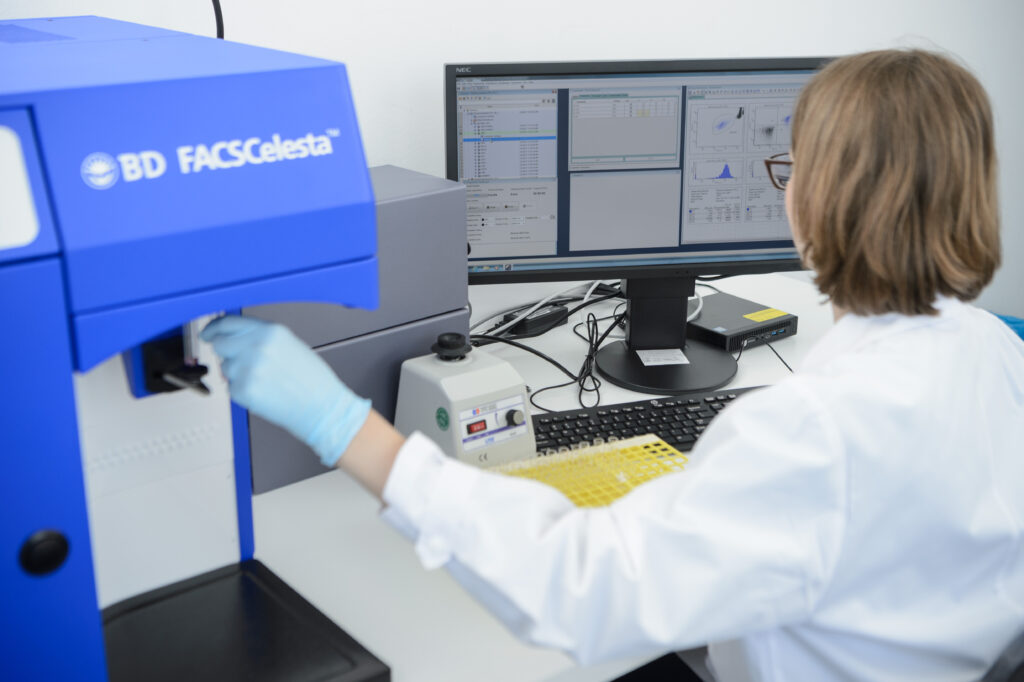
Advanced platelet analysis
Our laboratories are at the forefront of platelet research, employing an array of sophisticated analytical techniques to unravel the complexities of thrombosis and haemostasis. We utilize flow cytometry to meticulously characterize platelet activation and receptor expression, while our flow adhesion assays assess the dynamic interactions of platelets under shear stress conditions, mimicking physiological blood flow. Complementing these in vitro approaches, we deploy state-of-the-art in vivo models to observe thrombotic processes in real time, providing invaluable insights into the mechanisms driving platelet function and dysfunction in living organisms. These integrated methodologies ensure a comprehensive analysis of platelet behaviours, paving the way for breakthroughs in cardiovascular medicine.
Understanding platelet biogenesis
Our research delves into the intricate processes of thrombopoiesis and platelet biogenesis, employing a comprehensive suite of sophisticated techniques to unravel the mechanisms of platelet production. We utilize live-cell imaging to visualize the dynamic process of megakaryocyte maturation and platelet release in real-time. Coupled with high-resolution microscopy, we can closely observe the subcellular structures critical for platelet formation. Flow cytometry allows us to quantify and analyse the phenotypic variations in megakaryocytes and developing platelets, enhancing our understanding of their functional properties. Additionally, genetic manipulation techniques such as CRISPR/Cas9 are employed to investigate the genetic determinants involved in megakaryocyte proliferation and differentiation. We capitalise on intravital two-photon microscopy to monitor thrombopoiesis in vivo. Together, these methodologies provide profound insights into the regulation of thrombopoiesis, offering potential targets for therapeutic interventions in platelet-related disorders.
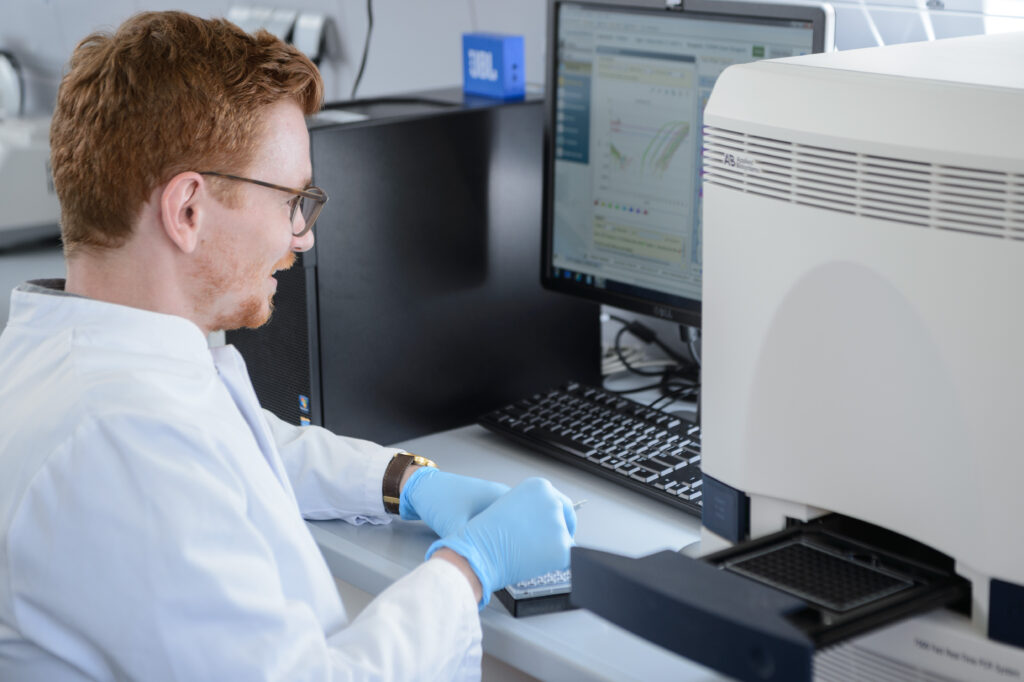
Single-cell Multi-omics
The Core Unit Systems Medicine stands at the cutting edge of cellular research, offering specialized services in single cell genomics. This core facility is equipped with advanced technologies for high-throughput single cell RNA sequencing, enabling precise analysis of individual cells in diverse biological contexts. By dissecting the complex heterogeneity of tissues and identifying unique cellular signatures, our unit provides essential insights into cellular functions, disease mechanisms, and therapeutic targets. This facility supports a wide range of applications from basic research to clinical studies, empowering researchers to uncover the intricacies of cellular dynamics and interactions at an unprecedented resolution. The Core Unit Systems Medicine is a joint venture of the Medical Faculty of the University of Würzburg and the Interdisciplinary Center for Clinical Research (IZKF) of the University Hospital Würzburg (UKW), which is located within the Rudolf Virchow Center. The unit’s expertise and state-of-the-art tools facilitate groundbreaking discoveries in molecular biology, enhancing our understanding of health and disease at the single cell level.
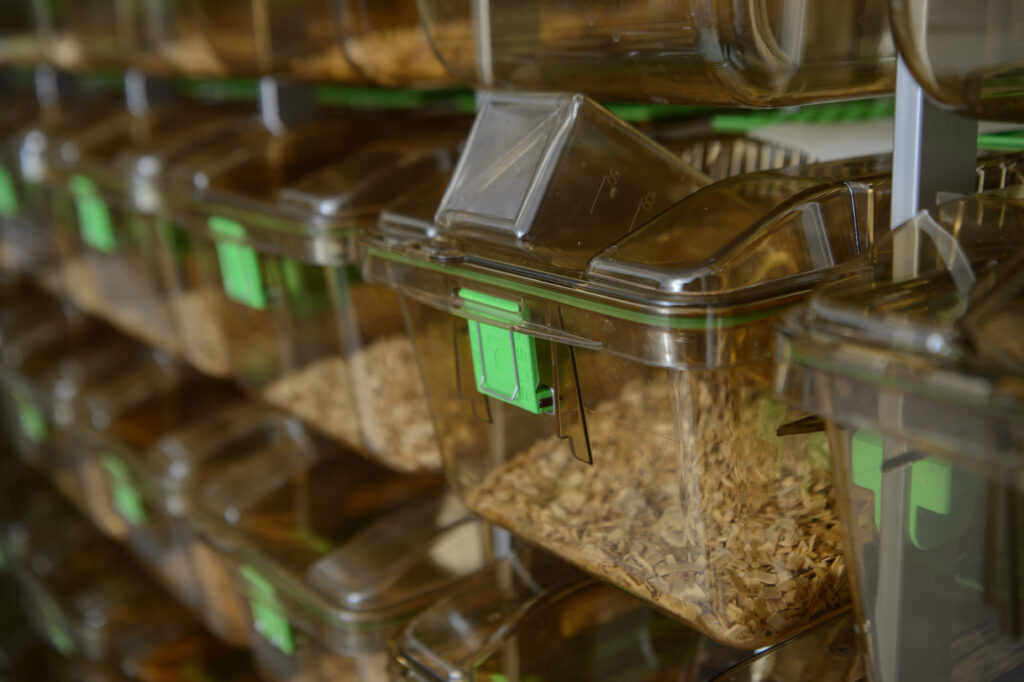
Central Facility for Experimental Molecular Medicine (ZEMM)
The Central Facility for Experimental Molecular Medicine (ZEMM) is a key resource at the Medical Faculty, dedicated to supporting experimental research in molecular medicine. This facility provides state-of-the-art laboratories and animal housing areas to research groups for specific scientific projects. Spanning approximately 1,000 square meters, the animal housing is divided into three sections: open housing, breeding areas, and a specialized SPF (Specific Pathogen Free) area designed for breeding and maintaining transgenic animals under stringent hygienic conditions. These facilities are crucial for the central breeding and maintenance of non-infectious experimental animals for members of the University and University Hospital. Equipped with advanced ventilation and climate control systems, the ZEMM ensures optimal conditions for animal care, facilitating cutting-edge research in a controlled and ethical environment.
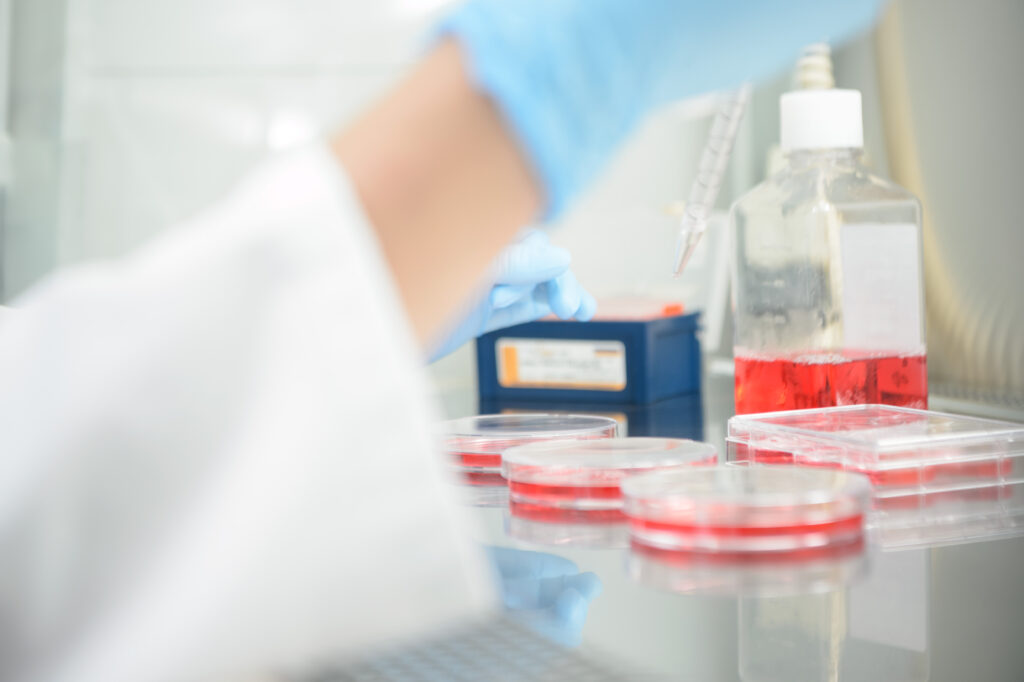
Interdisciplinary Biobank and Data Repository Würzburg
The “Interdisciplinary Biobank and Data Repository Würzburg” (ibdw) is a pivotal facility within the Medical Faculty, jointly supported by the University Hospital Würzburg (UKW) and the Julius-Maximilians-Universität Würzburg. The ibdw operates as an independent, interdisciplinary entity, offering comprehensive biobanking services to all clinics and institutes associated with UKW. It is comprised of a Liquid Biobank, a Tissue Bank, and a Sample Database, storing liquid and tissue samples that are no longer needed for diagnostic purposes. These samples are crucial for modern medical research, enabling the study of diseases and the development of new therapeutic approaches. The ibdw ensures that these samples are rapidly processed, pseudonymized, and stored in state-of-the-art automated cryogenic facilities to maintain their long-term viability. This facility not only supports local research but also forms part of a broader network, sharing resources and data with national and international biobanks and research institutions under strict ethical and data protection standards.

Research Data Management
Research Data Management (RDM) at the University of Würzburg is crucial for handling the extensive data generated during and after the research phases, adhering to DFG guidelines on data management. The RTG groups are well-equipped with high-end workstations specifically designed for intricate image analyses. Access to state-of-the-art software like Huygens Deconvolution, Imaris, and Arivis enhances their capability to process and analyse complex datasets effectively. RDM at Würzburg encompasses the entire lifecycle of research data, from initial planning and collection through processing, analysis, publication, archiving, and subsequent reuse by the academic community. This integrated approach ensures that data handling is streamlined and compliant with best practices, facilitating high-quality research output and fostering a collaborative and efficient research environment.


